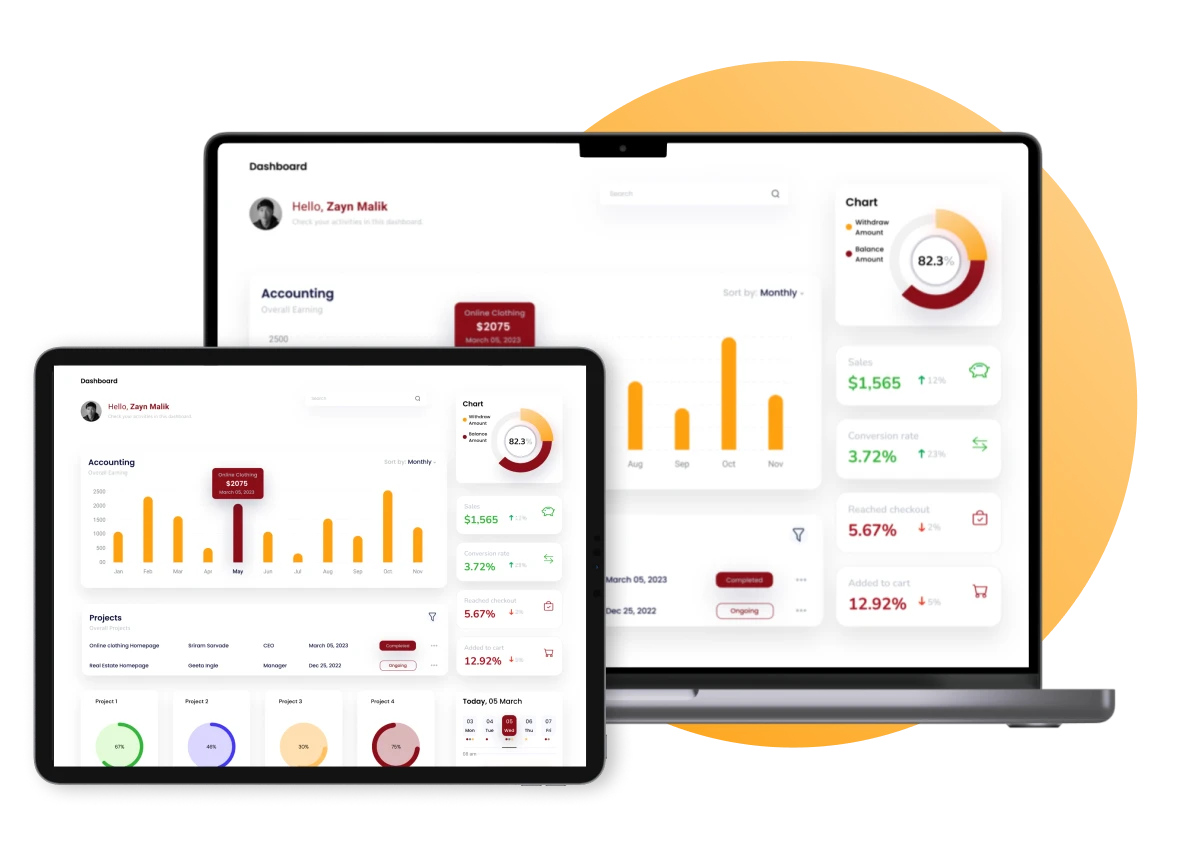Have you ever wondered what your company’s total assets are worth? Is it a figure reflecting your business’s financial health or just a number on a balance sheet? Understanding this is crucial for any business looking to grow or survive in a competitive market.
Total assets represent everything your business owns, from cash to property and equipment. They play a vital role in assessing your company’s financial strength. Without this knowledge, you may miss opportunities to maximize your resources and optimize business decisions.
Read this article carefully, as we will explore what is total assets, why calculating them matters, and how to do it correctly using easy formulas and examples. Let’s dive deeper into this essential aspect of financial management!
Key Takeaways
|
What is Total Assets?
Total assets refer to everything your business owns and can use to generate value. These include cash, equipment, property, inventory, and investments. It’s the sum of all resources available to the company for future business activities.
Total assets example: For example, if your company holds $50,000 in cash, owns $100,000 worth of equipment, and has $150,000 in property, the total would add up to $300,000, representing the total value of all resources at your disposal.
Total assets represent the company’s worth and are crucial to your balance sheet. They reflect how much you can leverage for business operations, growth, or to secure financing. The higher your assets, the more financial strength your company holds.
Why Calculating Total Assets Matters?

Calculating assets is crucial because it shows your business’s financial health. Understanding this number can help you identify areas for improvement, growth plan, and ensure your company remains financially sound.
If you neglect total assets, you risk overlooking valuable resources or missing out on opportunities to optimize your finances. You may struggle to manage your cash flow or make informed investment decisions without an accurate calculation, which can harm business stability.
Moreover, tracking average total assets over time gives you a clearer view of your company’s growth and performance, helping you identify trends and make better long-term financial decisions.
Failing to calculate assets accurately also impacts your ability to secure loans or attract investors. Potential partners or financial institutions will want a clear picture of your assets before considering funding your business.
Types of Assets
Understanding different types of assets helps businesses make informed decisions about their resources and financial strategies. Here’s a clear overview of key asset categories:
1. Current assets
These resources, such as cash, receivables, and inventory, can be converted into cash within a year. They reflect a company’s ability to meet immediate financial obligations and manage short-term operations.
2. Fixed assets
Long-term assets like buildings, machinery, and equipment are crucial for business activities. While they provide ongoing value, they’re not easily liquidated without selling or divesting.
3. Tangible assets
Physical assets with intrinsic value include equipment, land, and inventory. These assets directly support operations and can be easily appraised and utilized in production or sales.
4. Intangible assets
Non-physical assets such as patents, trademarks, and brand equity. Though harder to quantify, these assets hold significant value and can shape a company’s market presence and competitive edge.
5. Operating assets
Assets include inventory, equipment, and cash in the business’s daily operations. They directly influence the company’s ability to produce and deliver goods or services.
6. Non-operating assets
These assets, like idle land or financial investments, are not essential for core operations but can still provide value. While they offer income potential, they don’t contribute directly to day-to-day business activities.
The Formula for Calculating Total Assets

To calculate total assets, you simply add all the company’s assets. The total assets formula is:
Total Assets = Liabilities + Shareholder’s Equity
This is known as the Accounting Equation and is fundamental in accounting. It shows that a company’s total assets are financed through two main sources:
- Liabilities: This represents what the company owes to others, such as loans, payables, and other debts. Essentially, liabilities are the company’s borrowings.
- Shareholder’s Equity: The owner’s investment in the business includes shareholder capital and retained earnings. It represents the portion of the company’s assets owned outright by its shareholders.
In other words, every asset a company owns is funded either by debt (liabilities) or by equity (owners’ investment). This relationship must always be balanced, meaning the value of a company’s assets will always equal the sum of its liabilities and equity.
Example Total Assets Calculation
Let’s break down the formula using an example:
- Liabilities: $40,000 (loans, accounts payable)
- Shareholder’s Equity: $60,000 (owner’s investment and retained earnings)
Now, applying the formula:
Total Assets = $40,000 + $60,000 = $100,000
The company’s Total Assets are $100,000. This means the business owns $100,000 worth of assets, financed by $40,000 in liabilities and $60,000 in equity.
A total asset template can help you easily track and calculate your company’s assets, liabilities, and equity. This template will help you organize the values and apply the formula accurately, ensuring consistent and reliable financial reporting.
Using this template, you can also format total assets correctly, making it easier to understand how they are derived from the company’s liabilities and equity.
Challenges in Calculating Total Assets

Calculating total assets involves more than adding numbers—it requires careful attention to detail. Several challenges can arise, making the process more complex.
Here are some of the challenges companies face in this process:
1. Valuation of intangible assets
Estimating the value of intangible assets like trademarks, goodwill, or patents is challenging. Their worth is often subjective and can fluctuate based on market conditions, making it difficult to assign a precise value.
2. Complexity of accurate reporting
Accurate reporting becomes more complicated when businesses hold various asset types, such as fixed, current, and intangible assets. Proper classification and ongoing reassessment are required to ensure all assets are correctly valued and reported.
3. Depreciation and amortization
For fixed and intangible assets, depreciation and amortization introduce additional complexity. These adjustments affect the reported value over time and must be accounted for to accurately reflect the asset’s current worth.
Cloud accounting solutions can help overcome these challenges. They ensure proper valuation of intangible assets, correct depreciation, and reliable financial data, ultimately reducing errors and improving efficiency.
HashMicro Accounting Software: Empowering Your Asset Calculation Process

Accounting software is vital for businesses to cultivate financial clarity and efficiency. By automating complex tasks like asset calculation, it reduces human error, empowers informed decision-making, and provides a deeper understanding of your company’s proper financial health.
HashMicro’s accounting software makes total asset calculations more efficient and accurate. With built-in tools to track and manage current and fixed assets, you can easily calculate your assets, monitor depreciation, and generate financial reports—all in one place.
Features:
- Financial Dashboard: Track the overall financial health of your business, including income, cash balances, receivables, payables, and more.
- Cash Flow Forecasting: Accurately forecast your future income and expenses to manage cash flow better.
- Fast Bank Reconciliation: Automatically and securely imports all bank transactions for quick reconciliation.
- Accrual & Amortization: Automatically records and calculates accruals and amortizations, reducing the risk of human errors.
- Peppol e-Invoicing: Connects with Singapore’s Peppol e-Invoicing network for easy, standardized invoicing between businesses.
- Analytical Reporting: Instantly generate key financial reports like income statements, balance sheets, and cash flow statements.
Conclusion
Calculating total assets is crucial for any business to assess its financial health and make informed decisions. Companies can optimize operations and plan for future growth by understanding and tracking these assets.
HashMicro accounting software simplifies calculating total assets. It helps you track, manage, and accurately report current and fixed assets, saving time and minimizing errors.
HashMicro not only assists your business in calculating total assets but also offers a powerful Asset Management Software to simplify the management of all your company’s assets. This innovative solution enables you to monitor assets in real-time, schedule maintenance automatically, and generate detailed reports to maximize efficiency and reduce costs.
Want to see how HashMicro can improve your asset management?
Sign up for a free demo today and discover how our accounting solutions simplify financial management and provide a clearer view of your business’s finances.

FAQ
-
How do you calculate total assets?
Total assets are calculated by adding up everything a company or individual owns. This includes cash, property, investments, inventory, and any other valuable resources.
-
What is meant by total assets?
Total assets refer to the sum of everything owned by an entity (individual, business, etc.) that has value, such as money, real estate, equipment, and investments.
-
What is a good total asset?
A good total asset depends on the context (individual or business). Generally, having more assets means more financial stability, but what’s considered “good” varies based on personal or business goals, debt levels, and financial needs.
-
Are total assets the same as income?
No, total assets are not the same as income. Total assets are the value of everything you own, while income is the money you earn over a period of time.



















































